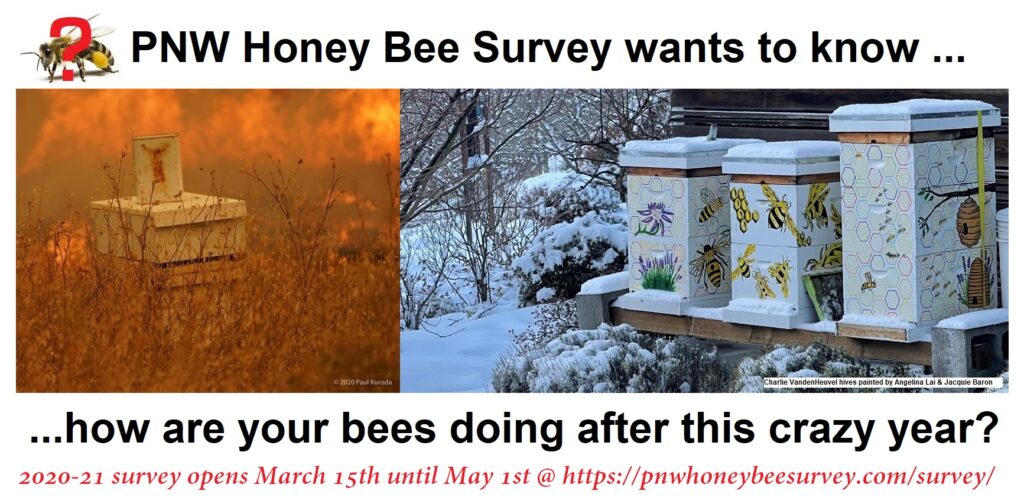
National and regional loss/management surveys demonstrate the annual loss of bees overwinter fluctuates from one season to the next. It is not the coldest temperatures but fluctuating weather that is hard on bees. By January many colonies have brood, which winter pollen foraging promotes. In January and February colony size and amount of honey stores are most critical to overwintering success Effectiveness of previous season varroa mite control is also a critical factor.
It is still too early to be able to determine how colonies have fared during this winter, although early reports seem promising so far. Increasingly, winter survival models, using the extensive multiple years of loss data, are being utilized to seek to correlate losses with colony managements and environmental factors.
An earlier study from Penn State found overwintering success influenced by higher colony weight and size of the population colonies reached prior to winter. Origin of stock was not important, at least for central Pennsylvania. Higher temperature and precipitation during the warmest seasonal quarter was correlated with improved wintering success. Recently a detailed look at the data from the Bee Informed National Survey linked increased winter colony loss rates with winter weather. Specifically, November mean maximum temperatures and mean February precipitation predict success.
In Oregon and Washington annual colony loss is assessed with the https://pnwhoneybeesurvey.com For Oregon backyarders, the overall trend has been essentially flat over the past 13 years at just under 40% annual colony loss; for commercially managed colonies losses are one-half that level, at just above 20%.
The 2023 survey of the 22-23 winter and 2022 management season will be open for your participation mid-March through April. After you open your colonies and assess your winter success please take the time to enter your data in the survey. It should take less than 5 minutes. Reports by club are posted beginning within a month following survey close April 30th . Can we count on you entering your data and “beeing” among those counted? THANKS.

